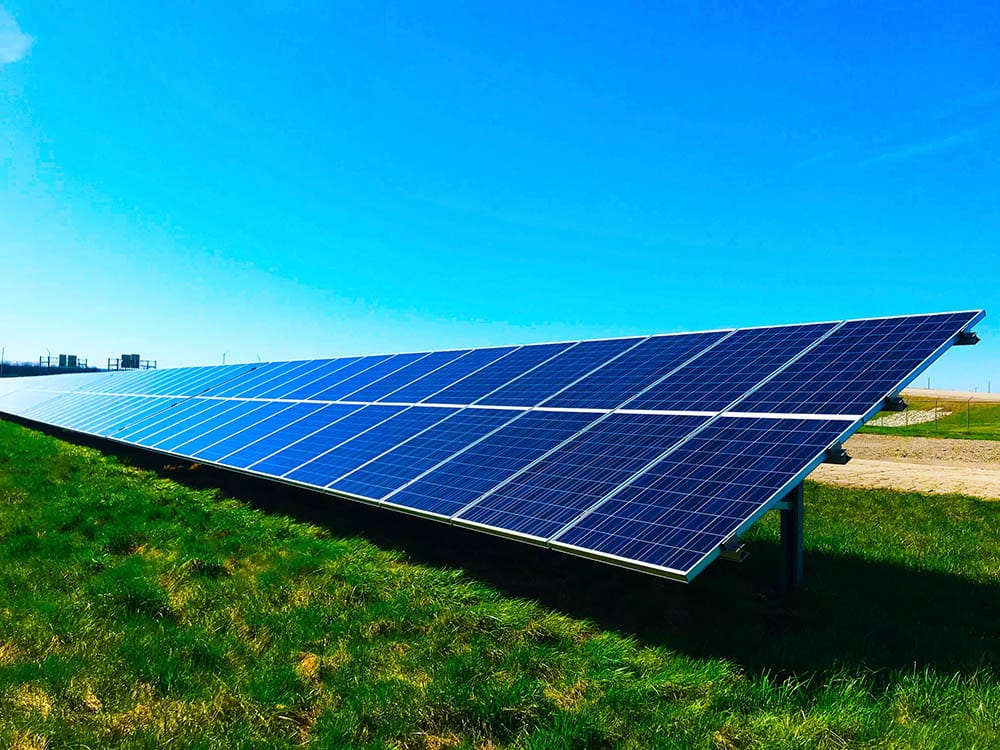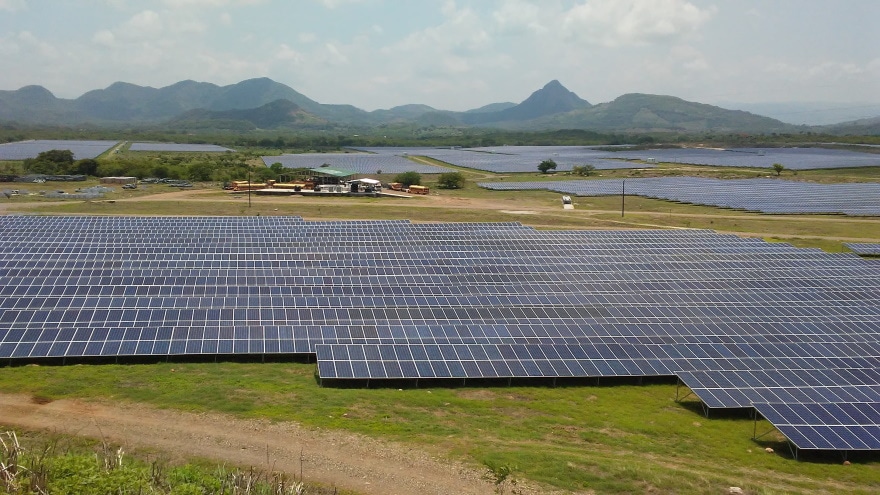What is Solar Array? What You Need To Know!
-
Pete Ortiz
- Last updated:

If you’ve been looking into the idea of switching to green power, you’ve probably had to learn a few fancy new terms along the way. This article discusses a simpler, yet vitally important term in solar power; the solar array. A solar array is simply a collection of one or more panels in a solar system. You could think of a solar array as an arrangement of solar panels.
It may seem like a simple concept, but there are many things that need to be considered before you can install a solar array and start saving money. A solar array is the most important part of the solar power system, so it’s crucial to get it right.
Below we cover everything from bylaw considerations to panel types below. You’ll also find out just how many panels it takes to power the average American home! Before we get carried away, however, here are some things to think about before getting started:
Three Factors to Consider Before Installing a Solar Array
A solar array can refer to something as simple as the panel component in a solar-powered light, or as complex as a sprawling solar farm. While it may seem like a fairly simple concept to place a panel in the sun and plug it in—but there are a number of things to consider:
How much space do you have? How much electricity do you use? Do you plan on selling it back to the grid? These are just a few of many questions that you will need to answer—many of them long before you install. Here are some things to think about before getting started.
1. Zoning and Bylaw Requirements
It’s always wise to check the local zoning and bylaws regarding solar installation. Of course, you need to ensure that there is are no restrictions. Local bylaws and municipal regulations may limit or restrict your solar array capabilities, but there are also so potential benefits to looking into the regs.
It might be handy to know that some districts will protect your panels. There are municipalities that have adopted solar-shading ordinances. These will protect your solar array from shade should somebody wish to develop on adjacent properties—so it pays to know!
2. Electrical Requirements or Goals
It’s important to realistically assess your home’s energy consumption levels and determine what you want to achieve. It doesn’t matter whether you are hoping to reduce your bill, live off of 100% green power, or are hoping to sell excess power back to the grid. Your consumption habits will dictate the requirements of your array, and almost every decision you make going forth. It’s crucial to have a realistic idea of your needs.
3. Proximity to Grid Infrastructure
This is something you will want to consider if you plan on using your solar array to generate a return. If you are planning to sell excess power back to the grid, then it is going to be more profitable if you are closer to a substation for an important logistical reason.
For the arrangement to work, you need to send and collect your non-solar power from the connection at these specific points in the electrical system. The problem arises in power-loss over distribution.
In other words, the further you are from a substation, the more power will be lost in transit, and the less money you will make. Setting up your solar array within 1 mile of a substation is ideal.

 How Are Solar Arrays Formed?
How Are Solar Arrays Formed?
Now that you have an idea of what you want from your system, it’s time to think about how to design a system that will meet those goals. Understanding the characteristics of different solar array designs will help you to meet your objectives and navigate any challenges with setting up an effective solar system.
Type of Solar Panel
Not all solar panels are the same! As technology has improved and changed different methods of converting solar energy into power have left us with 4 main kinds of panels that you will find today. While they all, in essence, do the same thing, there are subtle differences in their processes that can have ramifications on your solar array and its capabilities

Monocrystalline
These panels are made of silicon. They are called monocrystalline because they are made by taking a single silicone crystal and slicing it into layers. Monocrystalline panels are very space-efficient and durable, which makes them ideal for the end-user. The downside is that there is a lot of wasted silicone associated with producing them, making them more expensive.
Polycrystalline
This type of panel was created to address the problem of waste and bring the cost of production down. By melting multiple silicone crystals down into a mold and then slicing them into pieces, these are produced more cheaply, with virtually zero material wasted. The only drawback from this is that the panels aren’t quite as efficient as their monocrystalline counterparts, making them less space-efficient for your solar array. Polycrystalline panels would make a good choice where space is not an issue but the cost of materials is.
Passive Emitter and Rear Cell (PERC)
These panels are based on the monocrystalline design but improved. They work by introducing another layer in the rear surface of the cell. This improves efficiency in a number of ways. It reflects light back into the panel’s cell—meaning more light is absorbed.
It also allows the panel to pick up more light from the rear face. Regular silicone panels won’t pick up certain wavelengths of light, so they end up passing through and reflecting off of the roof. With the added layer, these wavelengths are also absorbed. These are a little more expensive than monocrystalline panels but are ideal where maximum efficiency is required.
Thin-film Panels
These thinner solar panels find themselves at the opposite end of the spectrum than PERC panels. These ultra-thin., ultra-flexible solar panels are cheap and easy to install. They don’t even need a frame! The trade-off is that they aren’t as durable or efficient. These are an ideal panel for a lower budget with lots of space, and carry the added value of a reduced carbon footprint from their manufacturing process.

Direction and Obstruction
If you live right at the base of a North-facing cliff, you’re probably going to have a hard time collecting solar power from that location. It’s crucial to the design of your solar array that you take the time to consider any possible obstructions. These can be from adjacent buildings, trees, and natural features like mountains and cliffs.
Most homeowners find that their roof makes the optimal spot for collecting solar energy. If, however, you live on a larger property and have space to spare, a ground-based solar array might be the way to go.
It is likely a better option than tree removal (unless you’re into that kind of thing). You’ll want to ensure that your solar array is exposed to direct sunlight for a minimum of 3–4 hours a day. It’s also important to ensure that the panels don’t stand in the shade of each other, bringing us to our next solar array consideration:
Tilting or Non-Tilting
It’s also key to remember that depending on where you live, the angle of the sun’s pass will be different between seasons. For example, in the Northern hemisphere, you’ll find that the sun passes almost directly overhead in the summertime, but much closer to the horizon in the winter.
The further away from the equator that you’re located, the more pronounced this becomes. To help with this, there are tilting options available to keep the sun as perpendicular to the panels as possible, where they are most efficient.
Portrait vs Landscape
These terms are simply referring to the orientation of rectangular panels. Portrait means the panel is placed upright, while landscape refers to the panel on its side.
This is generally a matter of aesthetic preference, but depending on the shape of your roof, choosing whether to mount the panels vertically or horizontally may allow you to squeeze in an extra panel—maybe. In most cases, it works out to be about the same number.

How Many Solar Panels Do I Need to Run a House?
To give you an idea of how many solar panels you’re going to need, we can use an average American household as a benchmark. According to the US Energy Information Association (EIA), the average household uses about 893-kilowatt hours (kWh) per month, so we need a solar array that can generate up to 1000 kWh, to be safe.
Depending on the efficiency and output of the panel the average home would need between 16 and 27 solar panels. As far as home renovations and return on investment go, it winds up being a reasonable investment.
Relaaed Read: How Much Do Solar Panels Cost? What You Need To Know!
Conclusion
The world of energy is all about efficiency, but with limited financial resources, that definition can be expanded to include capital efficiency. With a well-thought-out solar array, it’s possible to minimize the cost of your initial investment, eliminate power bills and make money back, while doing the right thing for the planet. Putting some care into the design of your solar array is the best way to maximize efficiency in every context and ensure that you aren’t selling yourself short.
Featured Image Credit: Vasco Figueira, Unsplash
Contents


 How Are Solar Arrays Formed?
How Are Solar Arrays Formed?